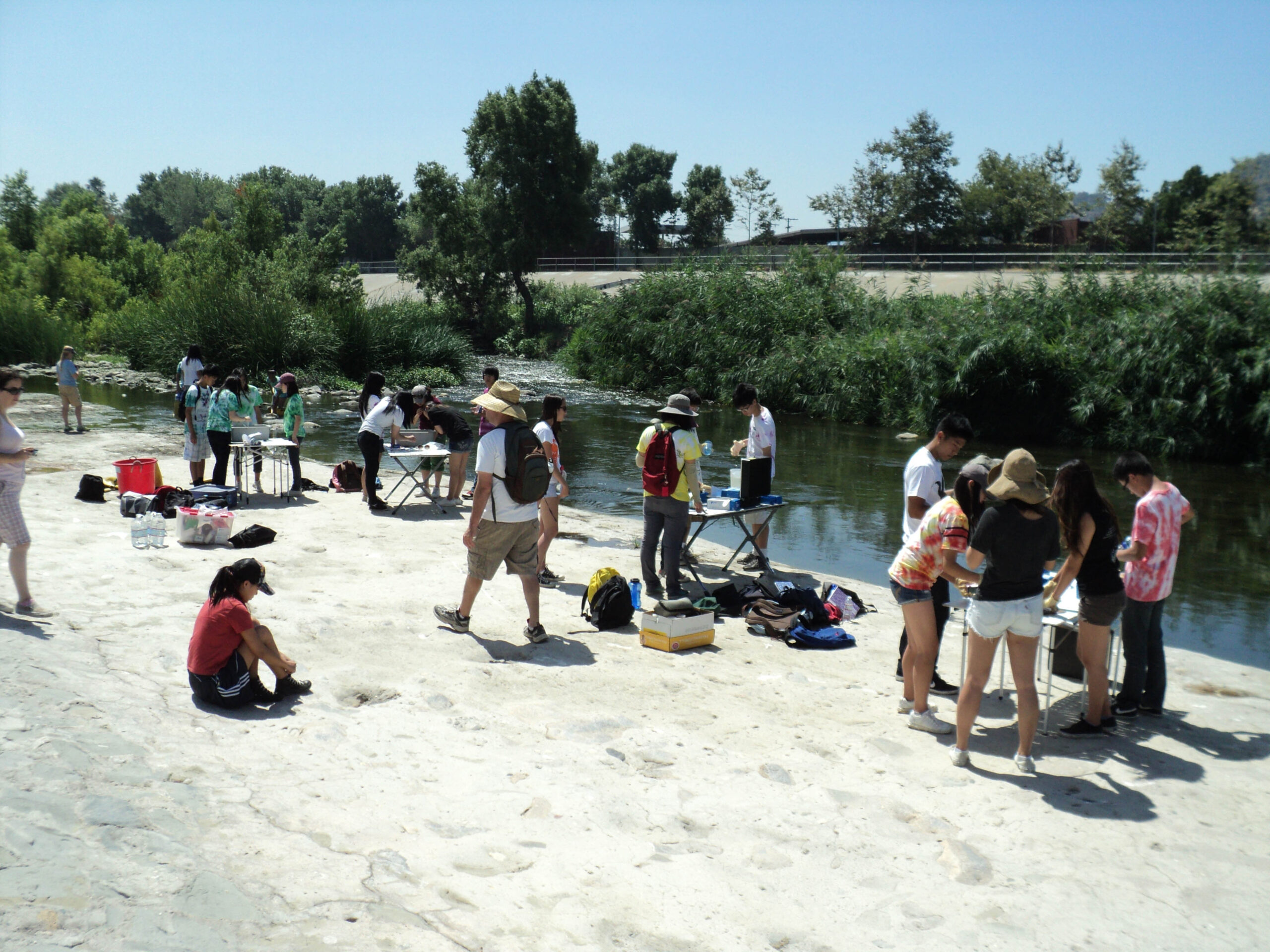
The first day involved learning general facts about the Los Angeles River, and an orientation for the participants. The students also started water testing that day, which included looking for how turbid (cloudy) the water was and how much nitrogen and ammonia was in the water.
Another test they administered was the bug count, where the students collected a bucket full of water and counted the number of bugs and the variety of them.
On the second, third, and fourth days students took field trips down the Los Angeles River to see just how human influence around the area has increased the pollution of the river. The fifth day, the students went to the Aquarium of the Pacific and got to see the ocean, where all the pollution eventually ends up.
The participants created their own group projects, ranging from documentaries on the impact of plastic bags to a research project on how pollution and human influence in areas of the LA River over time influence the ecosystem.
Yoonyoung Chang, a participant of Creek Week, tells how the program changed her view of pollution in the river. “I already knew that humans were influencing the environment in a negative way, but I didn’t know that the environment, particularly water sites, would be affected so dramatically. I was surprised that we were actually able to observe the influences and changes. I expected it to be subtle, but it was actually the opposite. I learned that as human influence was more and more emphasized, less and less macro invertebrates were to be found. Also, the variance in water quality at different sites was surprising. Well, overall, I think people aren’t very well informed about the dangers that they could cause.”
She also believes this program was different from many other programs in raising awareness. “It was educational, but in a fun and engaging way. Heal the Bay did a good job on raising awareness, and promoting students to take part in improving the environment. It wasn’t like one of those programs where you listen to instructors drone on about something or another that you would forget in a couple of minutes. I liked how we were able to get first-hand experience on a lot of things like testing water quality and looking for bugs. We were given the chance to learn for ourselves as opposed to being taught.”
The students are now working towards increasing awareness in their communities by using what they learned to teach others how pollution harmfully affects ecosystems and the environment.

